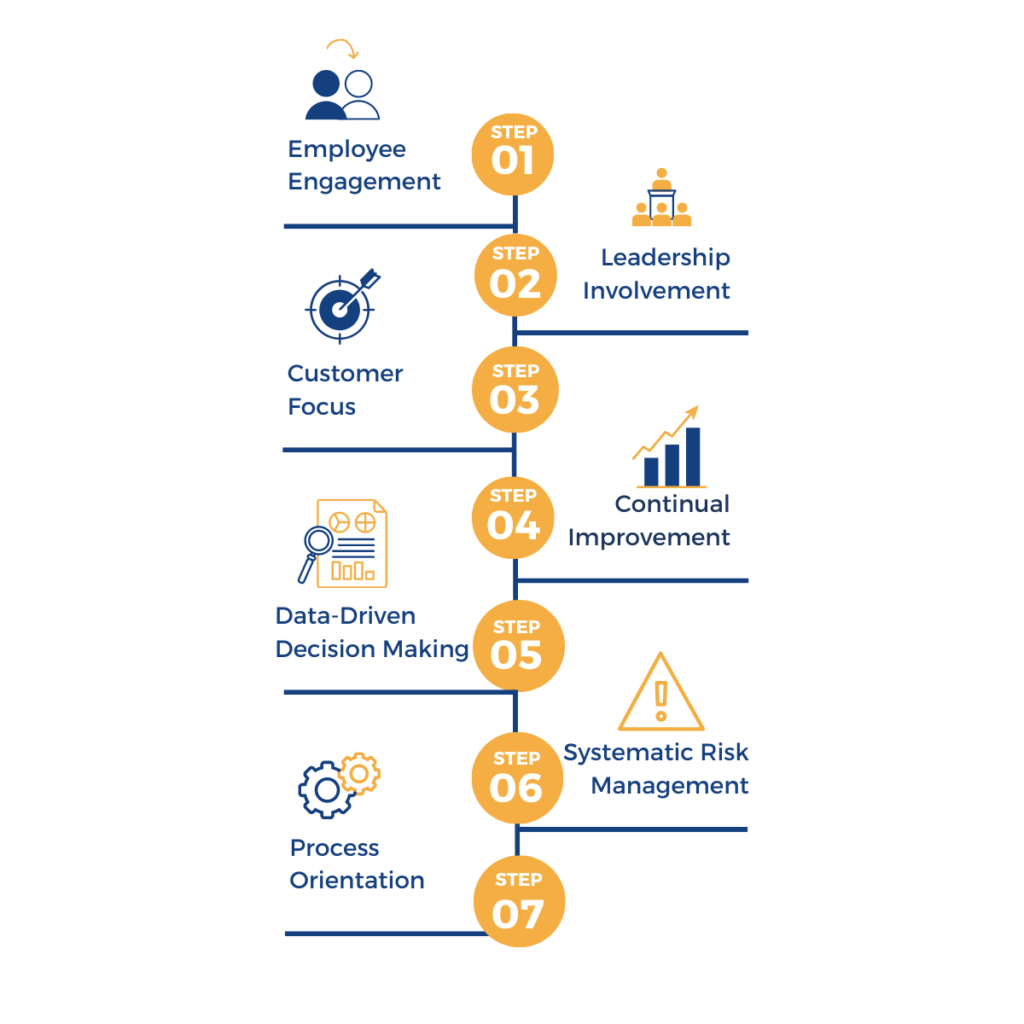ISO 9001: Principles and Practices Since 2015
ISO 9001: Principles and Practices Since 2015


ISO 9001 was first introduced in 1987, but like its core values of continuous improvement, new additions and changes have been made over time. Its most recent iteration was released in 2015, which is what modern organizations use today when pursuing ISO 9001 compliance.
In case you missed our previous blog post in this series in ISO 9001, you can check it out here. It explains that the very first step of achieving real change through ISO 9001 isn’t just about checking boxes on a list, but rather embedding principles throughout your culture. What should those principles and practices look like? That’s what we’re covering here.
Here’s a quick rundown of current ISO 9001 principles and practices:
The 7 Principles of Quality Management
ISO 9001 includes seven core principles that serve as your guide in continuous improvement. They are, in no particular order:
- Employee engagement
- Leadership involvement
- Customer focus
- Continual improvement
- Data-driven decision making
- Systematic risk management
- Process orientation
Each of these principles serves an important purpose that can collectively be defined as the values that guide daily operations and strategic initiatives.
Let’s look at a few specifics on each one:
Employee Engagement
Organizational excellence is everyone’s responsibility. Involving your team in quality management allows everyone to contribute to its success.
Leadership Involvement
Your company leadership should maintain a clear vision of the future. This allows them to make decisions in the present that will move forward to the future they envision.
Customer Focus
Maintaining a strong focus on customers – the beating heart of your business – ensures you are maintaining a commitment to quality. When you understand their needs, you can make key decisions that address those needs and thus improve your quality of service.
Continual Improvement
ISO 9001’s core is continuous improvement and serves as a reminder that there’s always ways to do better. With the right systems in place, you can better react and respond to opportunities to improve.
Data-driven Decision Making
Informed decisions support quality and risk management across the organization. Making informed decisions requires information to be readily available and to encourage communication.
Relationship Management
Relationships with vendors, suppliers, employees, prospective candidates, and customers are a direct reflection of the effectiveness of your quality management system. Relationships built on trust allow you to grow and maintain your competitive advantage and create mutually beneficial long-term strategies.
Process Orientation
Taking a process-first approach to doing business ensures that no detail falls through the cracks. Processes allow everyone on your team to learn and do from the same playbook for consistency and quality.
Using ISO 9001 Principles and Practices to Achieve Compliance
Though ISO 9001 principles can be categorized as above, they should actually be used cross-functionally to promote alignment throughout the organization. It’s not to simply consider each principle and how it functions in its own little box. Companies should take these principles to the next level by understanding how they influence their overall quality objectives. Understanding the implementation of the certain processes allows quality to thrive.
In our next chapter in this series, we’ll dive deeper into specifics on moving beyond compliance.
Our industry experts are a phone call away from making you feel secure about your supply chain partnership. Contact us here or call 800-950-6939.





